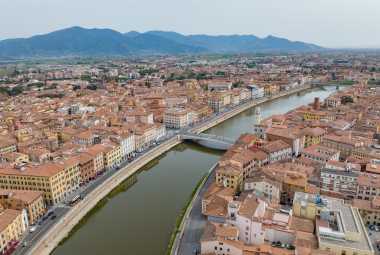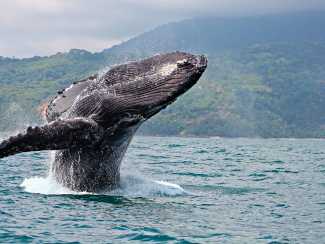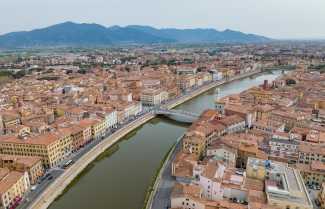Image by Shutterstock/state.gov
*Vacation Mode is a for-profit site. It contains paid banner advertisements that are generated and managed by a third-party network. This site also includes relevant affiliate links (both in the content and on the sidebar) all of which we do our best to clearly mark as such.
Costa Rica and Spain are two remarkable holiday spots. Whether you're looking for an exciting time in Costa Rica's lush rainforests or a cultural tour through Spain, these countries have something to offer. Let's dive into each destination to help decide which one is best for your next getaway!
Costa Rica, situated in Central America, is renowned for its stunning beauty and biodiversity. It has stunning beaches, lush rainforests and lots of wildlife. Nature lovers can explore Manuel Antonio National Park, zip-line through Monteverde's cloud forests or soak in hot springs. Plus, the country is dedicated to eco-friendly tourism, perfect for those wanting to reduce their carbon footprint.
Spain has a rich history and culture, evident in its architecture, cities and cuisine. Visitors can wander Barcelona's historic streets or be astonished by Granada's Alhambra. Try out traditional dishes such as paella and tapas, or admire artwork by Pablo Picasso or Miguel de Cervantes.
Each destination has its own unique qualities. In Costa Rica, you can go white-water rafting, surfing, or get a spa treatment with locally sourced ingredients. In Spain, you can explore different cultures - from Madrid's vibrant streets to Andalusia's flamenco tunes. There's also festivals like La Tomatina or the Running of the Bulls, where you can witness Spanish customs.
Costa Rica, though younger compared to Spain, also has interesting stories. Christopher Columbus arrived in 1502, believing he had reached India. He called it Costa Rica, which means 'rich coast', after spotting gold ornaments worn by indigenous people.
Overview of Costa Rica
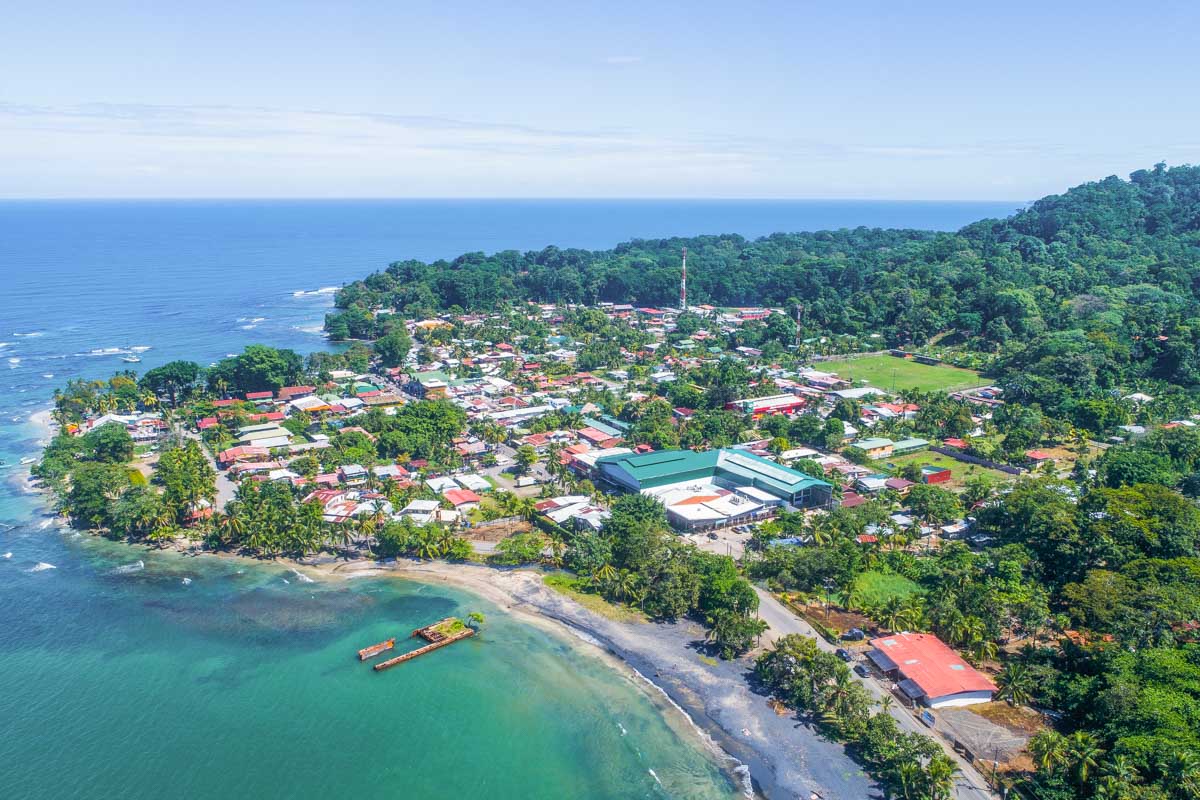
Costa Rica, a beautiful nation in Central America, has landscapes of variety and biodiversity rich. Its lush rainforests, volcanic mountains towering, and beaches of sand untouched, fascinate nature lovers and thrill seekers.
San Jose is the capital, Spanish is its official language, and the Costa Rican Colón is its currency. The population is over 5 million, and its area is around 51,100 square kilometers.
Notably too, is its record of environmental conservation. It is one of the most ecologically friendly nations. 25% of the land is protected for national parks and reserves.
Did you know? In Tortuguero, a coastal town, visitors are able to watch sea turtles nesting and hatching, an event that attracts people from all over the world.
In Manuel Antonio National Park, a story occurred recently that is inspiring. A group of volunteers found an injured sloth, entangled in plastic debris. They removed the plastic and nursed the sloth back to health. This shows Costa Rica's commitment to wildlife protection and conservation.
Costa Rica is attractive and exciting, not just for its amazing landscapes, but also for its devotion to ecological preservation.
Overview of Spain
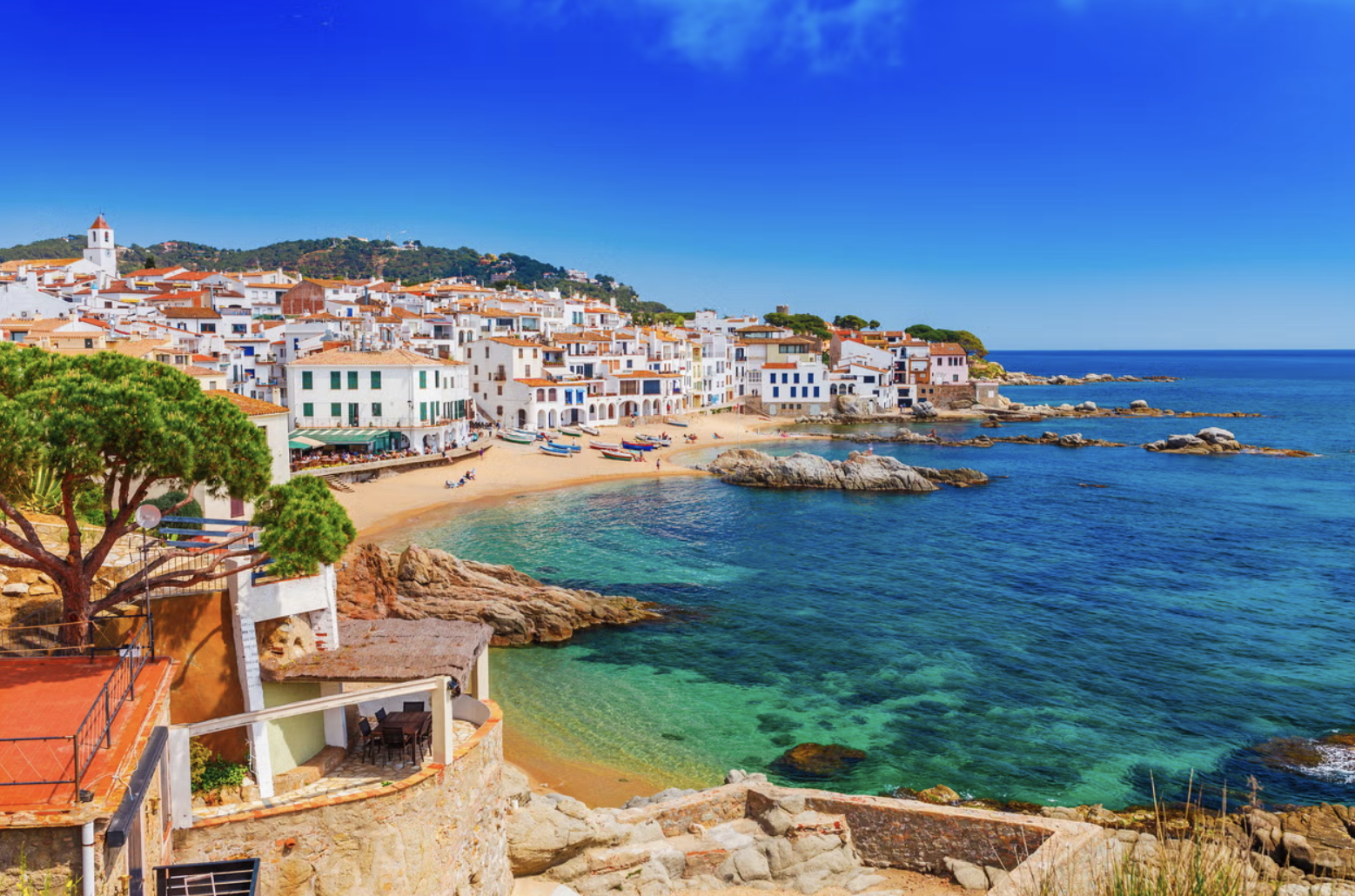
Spain is a country bursting with culture, history, and natural beauty. On the Iberian Peninsula, it's full of architectural wonders like the Alhambra Palace and La Sagrada Familia. Cities like Madrid and Barcelona are vibrant hubs with world-class museums, lively nightlife, and bustling markets. The beaches of Costa del Sol and Balearic Islands attract sun-seekers from around the world. Plus, Spain's delicious cuisine, featuring paella and tapas, tantalizes the taste buds.
In addition, there are loads of energetic festivals throughout the year. La Tomatina in Buñol involves tomato fights and the Running of the Bulls in Pamplona is always thrilling. Nature also abounds in Spain, with snow-capped Sierra Nevada peaks and the volcanic landscape of Tenerife.
To get a true taste of Spanish culture, visit smaller towns such as Ronda or Toledo. These towns have cobbled streets, ancient architecture, and local traditions. It's advisable to explore different regions to witness the Catalan culture in Barcelona, or Andalusia's flamenco dances and Moorish influences.
Pack your bags and get ready for an amazing journey through Spain. It's a nation full of history, artistry, flavorful delights, and breathtaking landscapes.
Climate
Costa Rica or Spain: A Comparison of Climates
Costa Rica and Spain have distinct climates that cater to different preferences. In Costa Rica, you will experience a tropical climate with high humidity and a wet season from May to November. Alternatively, Spain offers a Mediterranean climate with hot, dry summers and mild winters.
When it comes to unique details, Costa Rica boasts a remarkable biodiversity due to its tropical rainforests, while Spain showcases a wide range of microclimates, from the sunny beaches of Costa del Sol to the snowy peaks of Sierra Nevada.
In terms of history, Costa Rica has a fascinating past as it was inhabited by indigenous tribes before the arrival of the Spanish in the 16th century. Spain, on the other hand, has a rich historical background, with influences from the Roman Empire, Moorish rule, and the Golden Age of exploration. This historical heritage is still evident in Spain's architecture, cuisine, and traditions.
Overall, both Costa Rica and Spain offer unique climate experiences that contribute to their distinctive cultures and landscapes. Whether you prefer the lush rainforests of Costa Rica or the Mediterranean charm of Spain, each destination has its own allure for the adventurous traveler.
Costa Rica's climate is as unpredictable as a Tinder date - you never know if you'll get a sunny beach day or a downpour that ruins your plans, but hey, at least it keeps you on your toes!
Costa Rica's Climate
Costa Rica, nestled in Central America, is a captivating paradise with two distinct seasons - dry and rainy. From December to April, the dry season offers plenty of sunshine, warm temperatures and spectacular views of the volcanoes and mountains. The perfect time to explore the country's diverse wildlife!
May to November is the rainy season. During this time, refreshing showers bring forth vibrant colors from every corner. The rainforest comes alive with blooming flowers and cascading waterfalls.
Another interesting fact: Costa Rica has microclimates due to variations in elevation and geography. The Pacific coast enjoys warm weather year-round, while areas closer to the Caribbean experience more rain.
Pro Tip: Pack a lightweight rain jacket or umbrella - afternoon showers can occur even during the dry season.
Spain's Climate
Spain's climate is special, both for its citizens and visitors. Here are some points to know:
- Across the country, climates range from arid desert in Almeria to lush forests in Galicia. Different landscapes and influences from the Atlantic Ocean and Mediterranean Sea cause the variety.
- In coastal places, winters are mild and summers are hot, due to the temperate Mediterranean climate. But, inland areas have a continental climate with cold winters and hot summers.
- The Canary Islands have a subtropical climate - always warm and made more pleasant with Atlantic trade winds. It's a prime beach destination.
Plus, there are microclimates in Spain due to its geography. Southern Andalusia is hot in summer, while the Sierra Nevada mountains get snow in winter. So, Spain is perfect for those who want different climates in one place.
Pro Tip: When exploring Spain, wear layers so you're prepared for any climate.
Natural Attractions
Natural Wonders Unveiled
Discover the breathtaking natural attractions of these two remarkable destinations. From the enchanting rainforests of Costa Rica to the captivating landscapes of Spain, immerse yourself in the beauty of nature.
- Costa Rica's Rich Biodiversity: Explore the diverse ecosystems of Costa Rica, home to lush rainforests, stunning beaches, and towering volcanoes. Encounter an abundance of unique flora and fauna, including colorful birds, tropical orchids, and rare species like the jaguar and the sloth.
- Spain's Dramatic Landscapes: Delve into the fascinating natural wonders of Spain, from the rugged Pyrenees mountains to the stunning beaches of Costa del Sol. Explore the enchanting caves of Nerja, witness the majestic cliffs of Los Gigantes, and marvel at the impressive Mount Teide in the Canary Islands.
- Water Wonderland: Costa Rica's scenic beauty extends beyond land, with its mesmerizing water attractions. Visit the ethereal Monteverde Cloud Forest Reserve, where misty trails and cascading waterfalls transport you into a fairytale. Alternatively, venture to the turquoise beaches of Spain's Costa Brava, offering a paradise for swimmers, snorkelers, and sunbathers alike.
When it comes to natural attractions, both Costa Rica and Spain offer a myriad of delightful surprises. Discover hidden gems, unveil colorful landscapes, and immerse yourself in awe-inspiring beauty.
While exploring the rainforests of Costa Rica, I encountered a remarkable group of playful monkeys swinging from tree to tree. Their mischievous antics and graceful movements left me in awe of the wonders of nature. It was a truly magical experience that reminded me of the immense value of preserving these natural habitats for future generations.
Costa Rica's natural attractions are so breathtaking, you might just feel guilty for taking selfies instead of hugging trees.
Costa Rica's Natural Attractions
Costa Rica is overflowing with captivating natural attractions. From exotic wildlife-filled rainforests and majestic waterfalls, to stunning beaches - this Central American gem has it all.
Venture into the heart of Costa Rica and you'll be greeted by an incredible array of colors, and sounds. The country is home to 500,000 species - making it one of the most biodiverse places on earth. No matter where you explore, you'll be surrounded by fascinating flora and fauna.
Costa Rica is also known for its volcanoes. Poas Volcano National Park is home to one of the biggest active craters in the world, and Arenal Volcano is synonymous with adrenaline and adventure.
Tortuguero National Park is the place to be if you want to witness the incredible spectacle of sea turtles laying their eggs on the shore. This experience is both humbling and awe-inspiring.
Costa Rica's natural attractions have benefited local communities too, such as Manuel Antonio. This small town owes its growth to the nearby national park. Sustainable tourism practices have helped preserve Costa Rica's treasures, while providing economic benefits.
The allure of Costa Rica's natural attractions is much more than beauty. It's an experience that will leave a lasting impression. From sailing down the Tortuguero Canals, to soaring through the treetops on a zip line - this enchanting country has something for everyone. Let nature's treasures unfold before your eyes.
Spain's Natural Attractions
Spain's natural attractions are a trove of wonders, just waiting to be explored! Majestic mountains, pristine beaches - this diverse country has it all.
Let's take a peek at some of Spain's amazing natural attractions:
- Sierra Nevada in Andalusia; this stunning mountain range is the highest in mainland Spain and also has the most southerly ski resort in Europe. With its snow-capped peaks and quaint villages, it's a paradise for nature lovers and outdoor enthusiasts alike.
- Teide National Park in the Canary Islands has Mount Teide, Spain's tallest peak. It offers otherworldly landscapes, like something from a sci-fi movie. Visitors can hike through volcanic craters and marvel at the lunar-like scenery!
- Costa Brava in Catalonia is a haven for beachgoers. Rugged cliffs, hidden coves, crystal-clear waters - what more could you want? Relax in this idyllic backdrop.
- Asturias' Picos de Europa is nestled amidst northern Spain's countryside. These captivating limestone peaks offer breathtaking vistas. Hikers explore glacial lakes and an array of flora and fauna.
- But that's not all; don't miss out on the enchanting Caves of Drach in Mallorca or the surreal Timanfaya National Park in Lanzarote!
For the most out of your visit, plan ahead. Research opening hours, entry requirements - this will save time and disappointment. Dress appropriately - weather can vary. Layer clothing and wear comfortable shoes. Respect nature - adhere to regulations and leave no trace. Seek local guidance - insight into the history, geology, and ecology.
Embark on an adventure through Spain's natural attractions! Soaring mountains and tranquil beaches - this country has something for everyone.
Cultural Heritage
Cultural heritage is a vital element that defines the identity and history of a nation, encompassing the practices, beliefs, traditions, and artifacts passed down through generations. In Costa Rica and Spain, both countries boast rich and diverse cultural heritages that reflect their unique histories and influences.
Here is a table that highlights some key aspects of the cultural heritage in Costa Rica and Spain:
| Costa Rica | Spain |
|---|---|
| Pre-Columbian artifacts and indigenous traditions | Moorish architecture and flamenco |
| Traditional music such as marimba and cimarrona | Bullfighting and matadors |
| Diverse cuisine with indigenous and European influences | Tapas and paella |
| Traditional dances like the Danza de los Diablitos | Flamenco dance and sevillanas |
Costa Rica is renowned for its indigenous heritage and ancient artifacts, which offer an insight into the pre-Columbian era. On the other hand, Spain's cultural heritage is intrinsically linked with its history of Moorish rule, as seen in the stunning architecture of Alhambra and the rhythmic art form of flamenco. These unique details contribute to the cultural richness of both countries.
It is fascinating to note that the UNESCO World Heritage sites in Spain outnumber those in Costa Rica, with notable locations like the Alhambra, Park Güell, and Sagrada Familia. Costa Rica, however, is home to diverse biospheres, such as Monteverde Cloud Forest Reserve and Manuel Antonio National Park, which showcase the country's commitment to preserving its natural and cultural heritage.
A true fact that exemplifies the captivating cultural heritage of Costa Rica is the annual celebration of the Day of the Masquerade in Barva de Heredia. This traditional festival includes vibrant parades, music, and elaborate masks, providing a glimpse into the country's rich folklore and cultural traditions (source: Visit Costa Rica).
Costa Rica's Cultural Heritage: Get ready to be amazed by the rich history and traditions of Costa Rica, because unlike their coffee, their culture is anything but decaf.
Costa Rica's Cultural Heritage
Costa Rica's cultural heritage is a tapestry of captivating elements. This article reveals its unique details. Its traditions, history, and essence are explored.
Let's delve into its facets. Indigenous communities show ancestral wisdom, while colorful celebrations mark the calendar.
Traditional cuisine has been passed down through generations. Gallo pinto, ceviche, and arroz con pollo reflect cultural fusion.
Music and dance also preserve Costa Rican traditions. Tambito and cumbia evoke nostalgia and joy. Tamborito dance highlights African roots and inspires people to move.
Experience this vibrant tapestry. Explore festivals, try local delicacies, or learn traditional dances. Don't miss a chance to be part of something extraordinary.
Spain's Cultural Heritage
Spain's cultural heritage is a beguiling tapestry of history, art, and tradition. It is home to magnificent architecture like the Alhambra and the Sagrada Familia. The passionate flamenco dance is part of its culture. Plus, its scrumptious dishes like paella and tapas are renowned worldwide.
Exploring Spain's cultural heritage divulges enthralling details. Toledo is "the city of three cultures," where Christians, Jews, and Muslims lived in harmony for centuries. Valencia hosts the Fallas Festival, with papier-mâché sculptures set on fire.
The Reconquista is another significant part of Spain's cultural heritage. This 800-year struggle by Christian kingdoms to retake Iberia from Muslim rule shaped its identity. Islamic and Christian influences are seen in the Great Mosque-Cathedral of Córdoba.
Cuisine
Cuisine is an integral part of both Costa Rican and Spanish cultures. In Costa Rica, the cuisine is characterized by its simple and yet flavorful dishes, with a heavy emphasis on fresh ingredients such as fruits, vegetables, and seafood. Common dishes include casado, a plate of rice, beans, plantains, and meat or fish, and gallo pinto, a popular breakfast dish made with rice and beans. On the other hand, Spanish cuisine is known for its rich and diverse flavors. It varies greatly depending on the region, but common ingredients include olive oil, garlic, tomatoes, and a wide variety of vegetables and legumes. Some popular Spanish dishes include paella, tapas, and tortilla española.
In Costa Rican Cuisine, fruits, vegetables, seafood, rice, and beans are commonly used, while Spanish Cuisine offers a wide range of flavors with the use of ingredients such as olive oil, garlic, tomatoes, and various vegetables and legumes.
| Cuisine | Costa Rica | Spain |
|---|---|---|
| Ingredients | Fruits, vegetables, seafood, rice, beans | Olive oil, garlic, tomatoes, vegetables, legumes |
| Popular Dishes | Casado, Gallo Pinto | Paella, Tapas, Tortilla Española |
In addition, Costa Rican cuisine has a unique touch with its emphasis on sustainable practices and farm-to-table dining. The country is known for its organic farming methods and dedication to preserving the environment. On the other hand, Spanish cuisine is heavily influenced by the country's history and cultural diversity. Each region of Spain has its own distinct culinary traditions and specialties, offering a wide range of flavors and cooking techniques.
In Costa Rica, sustainable practices and farm-to-table dining are valued, while Spanish cuisine is influenced by diverse regional culinary traditions.
A true fact: Costa Rican cuisine is greatly inspired by the country's abundant tropical fruits, including mangoes, papayas, and pineapples. (Source: Lonely Planet)
Costa Rican cuisine: where tropical flavors meet the delightful challenge of figuring out what exactly you're eating.
Costa Rican Cuisine
Costa Rican cuisine is a delightful mix of flavors, symbolizing the nation's opulent cultural background. From Gallo Pinto, a traditional breakfast, to Casado, a popular lunch dish, there's an array of tantalizing meals. Let's explore some of these cherished dishes!
Notable delicacies from Costa Rica include:
| Dish | Description |
|---|---|
| Gallo Pinto | Rice & black beans spiced with onions, peppers & cilantro - a breakfast must-have. |
| Casado | Rice, beans, plantains, salad & your choice of meat/fish - a classic lunch. |
| Arroz con Pollo | Tasty chicken with rice, cooked in a savory broth with veggies & spices. |
| Sopa Negra | Hearty black bean soup - often served with boiled eggs, avocado & cilantro. |
| Olla de Carne | Comfort food of beef stew with root vegetables such as yucca, potatoes & chayote squash. |
Fruits grown in the country, like mangoes, papayas & pineapples, are used to make juices or desserts.
Costa Rican cuisine has developed over centuries, formed by indigenous customs & European colonization. Flavors from Spain, Italy, China & more have made Costa Rican cuisine truly unique.
Spanish Cuisine
Discover Spain's mouthwatering cuisine! From tapas to paella, explore a unique blend of Mediterranean ingredients and techniques. Not to mention regional specialties, such as Galicia's seafood dishes and Basque Country's pintxos. Plus, uncover hidden gems like arroz negro (black rice) from Valencia and salmorejo from Andalusia.
Savor these iconic dishes:
- Tapas - small plates with various flavors.
- Paella - saffron-infused rice with combinations.
- Gazpacho - a refreshing cold tomato soup.
- Jamón Ibérico - cured ham from Iberian pigs.
- Tortilla Española - a thick omelette with potatoes and onions.
- Churros con Choco - crispy fried dough with chocolate dipping sauce.
Experience the vibrant colors and bold flavors of Spanish gastronomy! Let your palate rejoice in each bite, as you uncover age-old traditions and modern innovation. Taste the irresistible charm of Spanish cuisine!
Cost of Living
The cost of living in Costa Rica and Spain can vary significantly. Costa Rica offers a more affordable lifestyle compared to Spain. However, Spain has a higher standard of living with better healthcare and infrastructure. In terms of housing, both countries offer a variety of options, from affordable rentals to luxury properties. Other factors such as transportation, food, and entertainment also contribute to the overall cost of living in each country. It's important to consider your lifestyle preferences and budget when deciding between Costa Rica and Spain.
Living in Costa Rica may be cheaper, but with enough sun, siestas, and tapas, the cost of living in Spain may just be worth it.
Cost of Living in Costa Rica
Expense? Cost (USD)? Here you go!
- Rent (1-bedroom apartment): $500-$800
- Groceries: $100-$150 per person
- Dining out: $5-$15 per meal
- Transportation: $1-$3 for local transport
- Utilities: $50-$100
Plus, healthcare in Costa Rica is cheap and high quality! Nature, culture, retirees, expats, digital nomads - all love Costa Rica!
But prices may vary in different parts of the country. Nevertheless, the cost of living in Costa Rica is quite low compared to other countries in the Americas.
Did you know? The World Bank says Costa Rica has grown economically and stayed stable socially in the past few years.
Cost of Living in Spain
Living in Spain can be costly, and it differs based on several things - like your location, life choices, and likes. To give you an idea, let's check out a table of the costs in Spain.
| Categories | Average Monthly Cost |
|---|---|
| Accommodation | €800-€1,500 |
| Groceries | €200-€300 |
| Transportation | €50-€100 |
| Utilities | €100-€150 |
| Dining Out | €300-€400 |
Plus, there are some special details. For instance, Spain offers free or low-cost medical care to its citizens. It's also famous for its culture and fun activities, so people can have a good balance between work and life.
Moreover, Spain is one of the 10 healthiest countries in the world according to Bloomberg Global Health Index 2021. This shows how much Spain cares for its people's health.
If you're thinking of living in Spain or just visiting, it's important to know the costs. With this info, you can make smart decisions about your money and enjoy all that Spain offers.
Safety and Security
Safety and security are crucial considerations when choosing between Costa Rica and Spain. Both countries have their unique features that ensure the well-being of residents and tourists.
In terms of personal safety, Costa Rica boasts a low crime rate, especially in tourist areas, thanks to its strong police force and security measures. Similarly, Spain offers a safe environment with an efficient law enforcement system and a well-developed infrastructure that promotes security.
The ease of access to emergency services is another aspect where both countries excel. In Costa Rica, the nationwide emergency number is 911, while Spain utilizes the pan-European number 112.
It is vital to note that visitor safety is of utmost importance to both nations, as they rely heavily on tourism revenue. It's always recommended to stay informed about any ongoing safety concerns and exercise general caution while traveling.
Looking for a safe getaway? Costa Rica offers adventure, wildlife, and just a slight chance of getting mistaken for a sloth and cuddled.
Safety in Costa Rica
Crime is present in Costa Rica, though not as bad as in other countries in the region. Pickpocketing and bag snatching can happen in touristy areas or on public transport. To avoid this, keep valuables hidden. Use hotel safes to store them. Be alert at all times.
Be extra careful when using ATMs or carrying lots of cash. Skimming devices may be present. Safer options are to withdraw money from respected banks or within hotels.
Natural disasters, such as earthquakes and hurricanes, may hit without warning. So, keep up with weather info and listen to authorities.
Hire local guides for outdoor fun. They know the trails and wildlife, and can help in case of emergencies.
Following these tips will help ensure a safe journey through Costa Rica!
Safety in Spain
Stay alert in Spain! Pickpocketing can be an issue in touristy areas, so keep your valuables safe. Public transport is often safe, but stay aware of your belongings and any suspicious behavior during peak hours. Have emergency contact numbers and nearby police stations and hospitals on hand. Technology can help too - apps give crime updates and safe routes for itineraries. Stay safe!
Conclusion
Costa Rica and Spain are two awe-inspiring spots that provide special experiences to voyagers. Although both countries have their own appeal, Costa Rica stands out for its untouched natural beauty and plentiful wildlife. With its verdant rainforests, gorgeous beaches, and active volcanoes, Costa Rica is a heaven for nature lovers. On the contrary, Spain charms visitors with its abundant history, energizing culture, and renowned architecture. From discovering medieval towns to enjoying delicious tapas, Spain gives a look into its enthralling past.
When choosing between Costa Rica and Spain, it depends on what you seek in a holiday. If you are an explorer who loves being engulfed by nature's wonders, then Costa Rica is the ideal pick for you. Think of zip-lining through the tree tops of Monteverde Cloud Forest or spotting sea turtles nesting on Tortuguero Beach.
Conversely, if history and culture interest you, then Spain will charm you. Explore the olden days by visiting emblematic sites like the Alhambra in Granada or the Sagrada Familia in Barcelona. Absorb Spanish customs by engaging in flamenco dancing or joining one of the cheerful festivals that take place all year round.
A disregarded factor is also budget matters: while Costa Rica can be more expensive due to its eco-tourism focus, discovering Spain can be cheaper for travelers with a smaller budget.
Pro Tip: Regardless of which destination you select – Costa Rica or Spain – make sure to submerge yourself in the local culture and take pleasure in all that these astonishing places have to offer!
Frequently Asked Questions
Q: What are some similarities between Costa Rica and Spain?
A: Both Costa Rica and Spain are known for their beautiful beaches and warm weather. They also have a rich cultural heritage and offer a variety of outdoor activities for visitors to enjoy.
Q: Which country has a lower cost of living, Costa Rica or Spain?
A: Costa Rica generally has a lower cost of living compared to Spain. The prices for accommodation, groceries, and transportation are generally more affordable in Costa Rica.
Q: Which country offers better healthcare facilities, Costa Rica or Spain?
A: Spain is renowned for its excellent healthcare system, which is consistently ranked among the best in the world. While Costa Rica also provides quality healthcare, Spain offers a wider range of specialized medical services.
Q: What are the visa requirements for Costa Rica and Spain?
A: Costa Rica allows many nationalities to enter without a visa for a specified period, while Spain has specific visa requirements for visitors. It's essential to check with the respective embassies or consulates for up-to-date visa information.
Q: Which country has a more favorable climate, Costa Rica or Spain?
A: Both countries have diverse climates, but Costa Rica is known for its tropical climate, with warm temperatures year-round. Spain, on the other hand, has a more varied climate, ranging from Mediterranean to subtropical and even alpine in certain regions.
Q: Which country offers more diverse attractions for tourists, Costa Rica or Spain?
A: Spain offers a wide range of attractions, including historical landmarks, vibrant cities, picturesque countryside, and world-renowned cuisine. Costa Rica is famous for its stunning natural beauty, ecotourism opportunities, and biodiversity. The choice depends on personal preferences.
Things to do in Costa Rica
Things to do in Spain





